Photo
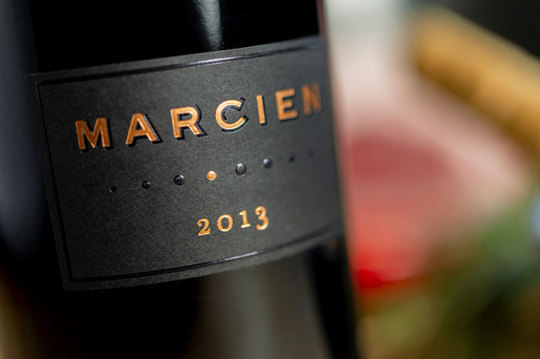
Restraint and Discipline...
The first time I peered into that ground glass viewfinder, I was hooked. It was a twin lens reflex camera - I think a Yashica or a Rollieflex - but everything looked sharper and more organized when I viewed the world through that two and a quarter inch square…perhaps because I didn’t yet know I needed glasses!
My little high school on the central California coast came equipped with a neglected darkroom and a few old cameras in a closet-like corner of the Home Ec. classroom. Once I showed interest, I had free reign and I owned that closet for the next four years.
Yes, I was that geek, omnipresent at every event, camera dangling from my pencil neck, taking pictures for the school newspaper and yearbook. That camera was power. With it, I could excuse myself from class to cover anything I deemed newsworthy and insert myself into any activity or meet any person. I loved it. I quickly embraced the concept of the decisive moment and I would lie in wait for the peak in action and emotion to reveal itself in my little square so I could press that shutter as if I were squeezing off a round.
With only 12 exposures to a roll of film and a clumsy reloading method, every shot had to count. I needed restraint and discipline and had to see everything in the frame, not just the subject, and know when something would ruin an otherwise perfect shot. I learned when not to shoot and I learned that what I left out of the frame was as important as what was left in, a lesson that continues to pay off to this day.
With approximately 200 acres of vines, editing is important. We could just throw everything together but that would be like a messy snapshot of a wine. Instead, each cuvée is a precise composition that is edited in a series of tastings until each wine tells a story of time and place. Of the blended reds, Libration is the most open and gregarious, POV is lush and ready for the table, Marcien is studied and serious - a classic wine that evolves over time.
Marcien is probably the toughest wine to edit. It requires restraint. Each lot of wine is analyzed by taste and character. Only the most structured and the most likely to evolve selections make it into Marcien. Oh, there’s always the temptation to make more, but that might ruin the shot. Like squeezing off a frame with an old camera, we only have one chance to get it right and Marcien is the best shot of the vintage.
0 notes
Photo
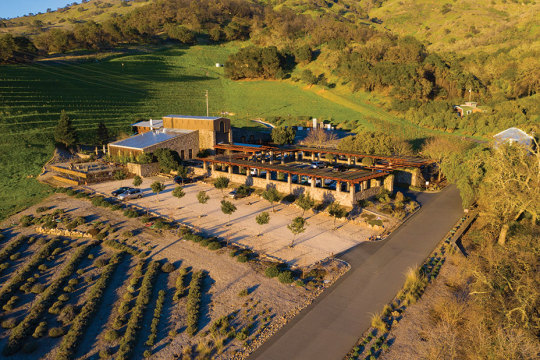
Hopeful... for a new beginning!
For the first time in years, I feel hopeful. I have been feeling more than a little despondent after the challenges of growing seasons that continue to break heat records and harvests interrupted three of the last four years by record fires. We realize that we are experiencing the predicted effects of climate change… and we aren’t alone. Australia experienced record heat and fires, Siberia was on fire this past summer, record high temps were recorded throughout the world, glaciers and permafrost are melting, Venice activated a flood wall for the first time to combat rising seas and we are experiencing a record number of hurricanes. So why am I hopeful? Because the incoming administration made climate change a priority in their campaign and, I hope, will make it a major part of their administration.
There is and there will be a lot of misinformation regarding climate change. Some are baseless and some are based on partial truths, like the claim that poor forest management is the cause of California’s extreme fire seasons. That is partially true, but forest management is not the cause of climate change. I was despondent because those chosen to lead were not acknowledging the science of climate change.
Twenty five years ago, I had the good fortune to attend a series of society dinners in San Francisco. I am usually uncomfortable at these types of events but Maria looked out for me by making sure I sat next to someone fun… it worked. From then on, I told Maria that I would only go to those parties if I could sit next to the same person every time. That person was intelligent, inclusive, well informed, able to discuss many topics, loved rock and roll and enjoyed a good glass of wine. She also had a twinkle in her eye and a genuine laugh. I knew nothing about her before we met, but she left an impression. Her name was Kamala Harris. I never imagined that she would achieve what she has, let alone someday becoming the Vice President of the United States, but the very fact that she did, gives me hope. Our politicians could be cartoon characters as far as I’m concerned. Their persona sculpted by the media, pundits or opposition ads. It is different when you actually know them. It allows you to cut through the chatter and see them as nuanced humans.
Why am I hopeful? Because she believes in science and takes climate change seriously… AND she will have the ear of the new decider-in-chief. She is a Californian who has experienced the fires first hand and knows the people who have been impacted. She understands that our natural resources, tourism and agriculture are an economic boon to the California economy. She also understands that the fires and climate change are like an unfair tax that not only burdens the victims but adds an “environmental tax” on everything from the cost of food to health care. Our winery has lost much since the 2017 fires that destroyed our SLD Estate Vineyard and other property. These fires forced us to abandon smoke-damaged grapes three of the past four years. That is the tax we are paying for a carbon-based economy that relies on fossil fuel, carbon belching concrete production and carbon releasing non-sustainable farming practices. If we think of these losses beyond ourselves, the economic ramifications are huge… insurance industry losses, tourism, health (both physical and mental), and the monetary cost to fight these mega fires. If we don’t tackle climate change, we and many others in the wine world won’t be in business in the future and I expect the cost of food will skyrocket as shortages become the norm.
None of this needs to be. We have the technology and the knowledge to change things. Farming can be encouraged to shift to carbon sequestering practices using regenerative methodology. Concrete production, if it were a country, would be the 8th largest contributor of greenhouse gasses but new technologies exist that can actually turn it into a carbon negative industry by capturing carbon in its manufacture. We are also on the cusp of a personal transportation revolution that will soon make the internal combustion engine obsolete. All of these fledgling ideas could become the norm and actually solve problems if they just get a little supportive nudge from the powers that be.
We now have a reason to be hopeful and a real reason to celebrate. Raise a glass with me to the opportunities of the future and a better world for our children.
0 notes
Photo
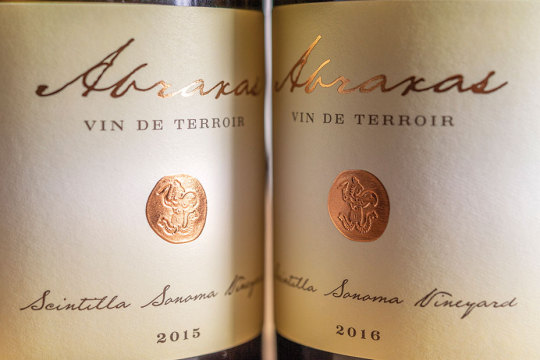
Celebration Time
I want to celebrate for no other reason than it’s been too long since the last time we’ve had anything to celebrate. I miss my friends. I miss gathering with our customers. I even miss my extended family. I now feel nostalgic about days past with long tables filled with people, food and wine, animated face to face conversation, handshakes, air kisses and hugs. I long for the days when all I had to worry about was catching a cold instead of a potentially deadly disease.
We need to party, even if it is limited to those in our “bubble.” Fortunately, we have tech that can simulate face to face conversation and include family and friends in an event but there is nothing like the real thing with an excess of food and big bottles of wine. Now wait, if we can’t have a big gathering, why would we want big bottles of wine? Well, they are fun, the wine ages more gracefully and they tend to be smaller than you think. All you need are three to four people to enjoy a magnum of wine… and as we head into the holiday season, I suspect it won’t be too difficult to gather with three or four folks… and Abraxas is the perfect wine for all the foods we like to eat during the holidays and beyond.
What I love about Abraxas is that it can be dressed up and dressed down. The combination of Riesling, Pinot Blanc, Pinot Gris and Gewürztraminer is perfect for anything from foie gras to hot dogs, heirloom pork roast with apples to carnitas and even Turkey to yams with marshmallows. Abraxas is the Swiss army knife of wine and it will turn any frown upside down.
2 notes
·
View notes
Photo
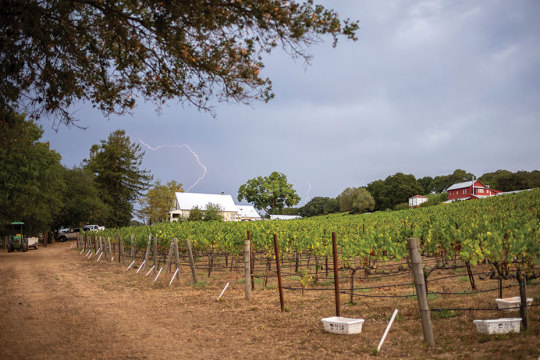
Life During Wartime...
No time for subtlety!
The smiling Frenchman pulled a bottle of Burgundy from his cave. He turned his back to obscure the label, dusted off the bottle and carefully removed the cork. As we held out our glasses in reverence, he poured each a taste and proudly asked us to guess the vintage. We knew it was old, but it was so fresh, so delicious, that most of us guessed the wine was from the ’70s (we were tasting it in the ‘90s). The vigneron puffed up and enthusiastically declared the wine was from 1945 and proceeded to tell us stories of his parents building a fake wall in the cellar to hide the wine from the Nazis… and of the difficulties growing and making wine in an occupied nation while war raged.
I couldn’t imagine what it would have been like to make wine during wartime. I found it fascinating that someone could stay focused with chaos and destruction all around them - with the constant fear that something might destroy generations of work. I speak in the past tense because I think I now have an inkling of what that might have been like. The past few years have been warlike. Since the fire event of the century that almost took out the winery in 2017, we have seen two more fire seasons surpass that ugly benchmark. This year will set the California record for the most acreage burned in a year… and, as I write this, the official 2020 fire season has just begun even though it has already created the most polluted air in the world and turned the skies into a dark, glowing-red Martian horizon. Yet the war we are waging is not just against the immediate threat of the fires but the existential threat of climate change. It is time to call it out for what it is.
We have all benefited from cheap energy. It has fueled an unprecedented period of prosperity. We like our big cars and many of us feel we have a right to them. We are used to jumping on planes for work and pleasure. We have grown plump on inexpensive food grown on industrial farms. The unfortunate reality of our prosperity is that it has downstream costs that are coming due in the form of weather anomalies and environmental degradation that are already costing billions, if not trillions in damage, lost crops and increases in food and insurance costs and a decrease in health and quality of life. If we want to enjoy the prosperity of the past, we need to embrace the realities of the future. Right now, California farmers are paying a “cheap energy tax” in the form of the costs of the losses associated with climate change.
First, we need an administration that recognizes and sees climate change as the existential threat that it is. Then, we need a Manhattan or a “moonshot” project to develop a response to climate change. This can be the development of more efficient batteries or non-polluting fuels, modernization of the electrical grid, guidelines on zero net carbon agriculture or carbon sequestration. This country has tremendous technologically advanced capabilities. We need to use the power of the tech industry for the good of all by using their data crunching capabilities to re-think how transportation works and redesign our transportation system to keep things moving with vehicles that “see” each other to allow traffic to maintain pace and reduce start and stop traffic that cause vehicles to burn more energy standing and starting. What about roads that charge vehicles while they drive? The ideas are limitless and beyond my daydream abilities, but, in a capitalistic society, we must create financial incentives so we can move forward and leave self destructive habits behind.
In the process of making fine wine, we have learned that when we only address a symptom of the problem and not trace it back to the root of the issue - which in our case usually has to do with soil health or pestilence due to monoculture and lack of bio-diversity - we only compound our problems. We have learned to take a holistic approach to keep things from becoming a problem in the first place. Climate change will require a holistic approach that will be uncomfortable for some but better for all.
-Rob Sinskey
*Photo Caption: Harvest is brought to a stop as an almost unheard of dry lightning storm runs through the Capa Vineyard on August 14, 2020, triggering fires throughout the region. The very challenging 2020 vintage saw extreme drought with many triple digit days in Napa and a world record of 130 degrees F in Death Valley in what turned out to be the hottest summer in California’s recorded history. The heat, drought and lightning created the perfect storm for a disaster. RSV only harvested the Pinot Noir on the Capa Vineyard for Vin Gris. No other wine was made in 2020.
0 notes
Photo
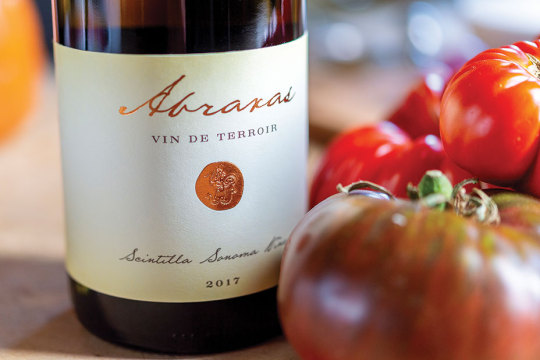
The Good With The Bad...
What’s keeping us apart is bringing us together!
It is hard to be convivial in a pandemic. Our mission for the past 35 years has been to bring people together over the common bond of food and wine. Well, that mission has been altered a bit, at least for now. We can’t, for now, gather at that large, sixty person winery table for seasonal feasts with guests from around the world. I miss the summer food and wine festivals (mostly I miss seeing my friends at those festivals) and I can’t hop on a plane to share our wine at wine dinners in restaurants around the country. Forget about overseas - the rest of the world… they don’t want us anyway. Instead we video chat happy hour with our friends and family, Zoom with our colleagues from wine shops and restaurants and dine with our immediate family.
There is an upside - time. We are home. We gather our family and, except for take-out here and there, we make dinner together. We talk. We actually work on projects and have time to complete them. So far we have built tables, planted gardens, built a greenhouse, cleaned out sheds, played music, gotten exercise, played with the dog and, in the evening, we take the veggies from the garden and fruit from the trees and make things. Fresh Anaheim chilis get roasted, peeled and stuffed for Chile Rellenos. Squash and eggplant have become nightly staples as they are either simply prepared and sautéed or turned into a tart or baba ganoush. Radishes are served with Maria’s special “crack” butter as an appetizer. Peaches that aren’t eaten fresh become a peach frangipane tart, a morning smoothie or grilled and served alongside an heirloom bone-in pork chop from our friends at Fatted Calf.
We now have time to make these things together, sit together and raise our glasses as we enjoy the fruits of our labor and talk. We discuss our fears and our dreams. We complain about the government. We reminisce and tell stories.
Food and wine is better than therapy. It slows us down, gives us pleasure, sustains and relaxes us, but, most importantly, it brings us together so we can solve our problems and achieve our goals together.
0 notes
Photo

The New Abnormal...
Keep on Farming in the New World!
We are suffering from a new syndrome - Environmental Anxiety. I thought being farmers would condition us to accept the uncontrollable nature of the weather. However, when you continue to see records fall - and not for the right reasons - it adds a new kind of stress.
This past February was the driest on record in California with no detectable rain for the entire month. What should have been a wet, chilly February was instead summer-like, with temperatures hitting the 80’s. We even saw bud break in some Carneros vineyards and the fruit trees filled with blossoms. Weird! Over the past few years we have witnessed some of the warmest years on record and fire has become a season. We used to worry about rain during the fall harvest season. Now we worry about fire and smoke.
I am getting used to weird. The unexpected is expected and the new norm is abnormal. What is really weird is that science predicted these extreme weather events decades ago and we, as a population, paid little heed.
I grew up in a small, central-coast town during the tail end of the hippie era when young people descended on the California coast to “get back to nature” and learn how to farm and become self-sufficient. The oft quoted slogan was “think globally, act locally” - this ethos has stuck with me to this day.
RSV is concerned with what is happening beyond our geographic area but we can only control our own actions, farming and business practices. Thirty years ago, Winemaker Jeff Virnig adopted farming systems to sequester carbon and increase organic material in our soil long before we had ever heard of “Regenerative Farming Practices.” We embraced these techniques because we thought it was the right thing to do. Not only could we reduce our impact on the planet, we felt we could make better wine using these advanced methods of Organic and Biodynamic practices. We also believed if there were healthy microbe populations in the soil we could create a more resilient vine that could access the nutrients it needed, when it needed them instead of relying on human inputs of chemicals and fertilizers.
But it goes beyond the farm…. the winery generates a majority of its energy through solar power and recycles production water to use in the culinary gardens. We do as much as we can to reduce our impact, but we are not perfect and we can’t have a global impact on our own. I am guardedly optimistic as more and more vineyards and wineries adopt regenerative methods, but we need as many farmers as possible to accept these methods as normal practice. Wouldn’t it be nice if our government would back and support regenerative practices with incentives that would allow regenerative agricultural food production to be competitive with commercial chemical farming in order to encourage conversion to practices that can lead to higher quality food, an improved environment and potentially reduce the impacts of climate change? Because fine wine… and food, shouldn’t hurt your palate or the planet.
0 notes
Photo
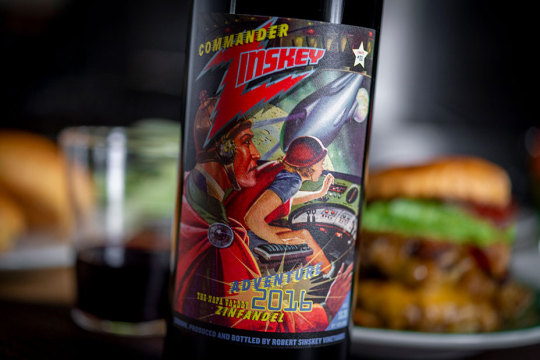
A Hero's Journey…
Of the People- For the People!
In the last episode… our hero - Commander Zinskey was preparing to travel back in time, start a new political party and run against the evil orange overlord. As you recall, the Commander believed the world needed a hero to directly stop the orange demagogue before he could irreparably damage democracy, destroy the environment, anoint himself a god and turn the planet into an orange wasteland.
The Commander, while preparing for his time leap, decided to pay a visit to the eccentric, inventor-billionaire, Elliot Tusk. The commander heard rumors that the crazy billionaire had developed an Alternate Reality Society Engine - A.R.S.E.! The mind bending device allows a preview of an individual's actions before they commit to them… allowing one to see how different scenarios or actions alters the future. As Mr. Tusk placed the A.R.S.E. helmet on Commander Zinskey, he whispered in his ear - “Your life will never be the same!” The Commander, somewhat confused, closed his eyes and went for the ride.
The first “if-this, then-that” scenario the A.R.S.E. played for the Commander was - If he went back in time, could he save the world from the evil orange overloard? As the scenario played out, he saw that he could prevail but quickly realized his own militaristic background wasn’t the best fit for the civilian government of the 21st century. Much to his chagrin, and a blow to his ego, he saw that he would be replacing one demagogue with another (himself) and he would alienate a large part of the population and the country would devolve into chaos. He realized a true hero, who loves his country, must decide between ego and the people he serves - his presidency would end in resignation.
He then decided to let the A.R.S.E. show him the future as it would naturally play out. To his surprise, he saw people come together in protest. He saw young and old - male, female, trans - straight, gay and pan - black, white, yellow, brown and even a few migrant alien green people, stand up to have their voices heard. He saw a young girl address climate change to a large, adoring audience. He saw the people protest for equal rights for all. He watched as the people demanded - and got - change. It was then that the Commander remembered the vow he took which ends with “…liberty and justice for all” and realized the people don’t need a hero - THE PEOPLE ARE THE HEROES!
Knowing the world was back on the right track, he turned to Mr. Tusk and asked if he could take his new Starship for a test drive.
To be continued…
0 notes
Photo
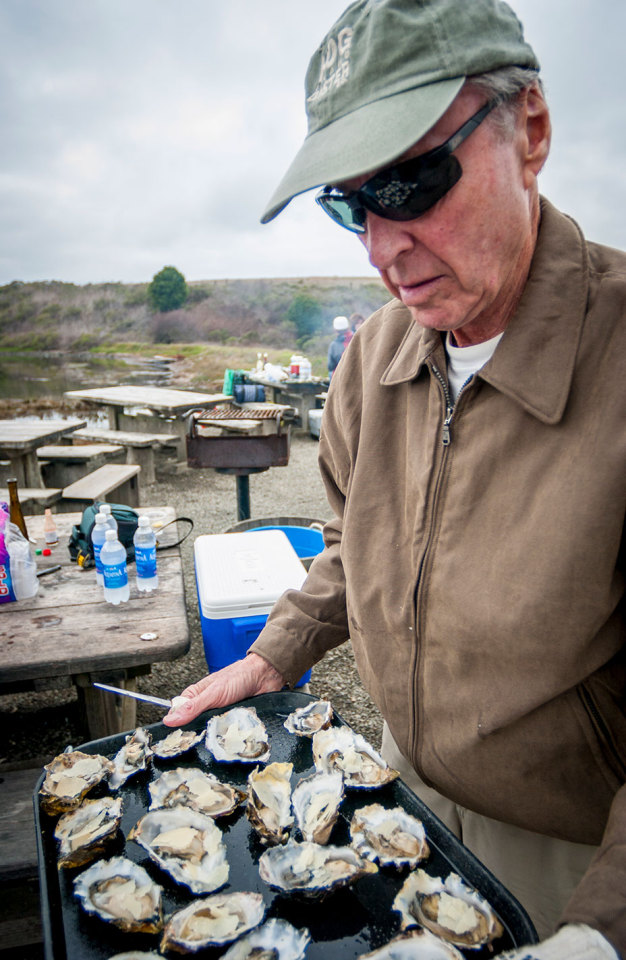
Bob Blanc...
A tale of gluttony, family and respect!
A full belly on the morning after the Thanksgiving feast wasn’t going to slow him down. Bob rose with the sun, jumped into his car and zipped down the driveway to pick up Bob. Bob, anticipating Bob’s arrival, was already dressed and ready. He could not wait to depart on their annual trek to Tomales Bay and Hog Island Oyster Company. Anyone who could fit in the car was allowed to go, but this morning it was the exclusive domain of the Bobs. My father, Bob Sinskey, created this tradition and my father in law; Bob Helm had become his enthusiastic sidekick along with myself, Rob and a young relative by marriage named Robert… on this day, we were all Bobs.
The Bobs were on a mission to consume oysters of all kinds… whatever could not be eaten were to be brought home. We visited the dives along the shores of Tomales Bay where surly waitresses hurled plastic baskets of freshly shucked oysters at us. We ate them plain, with lemon and with cocktail sauce. Dr. Bob brought the wine and pulled several cold half bottles of Pinot Blanc from his bag. He popped the corks and gleefully poured copious amounts of wine into plastic cups. We slurped the oysters and then the wine. Briny sweet flesh followed by crisp, floral wine… an oral-gasmic epiphany!
The Bobs paid their bill, jumped into the car and drove until they arrived at Hog Island Oyster Company where we barbecued oysters over an open fire and dredged others in corn meal and pan fried in butter. Again, Bob pulled out his bag of Bob Blanc. The crisp acidity of the wine was the perfect foil for the semi-sweet BBQ sauce and the fruitiness was a nice contrast for the smokiness of the flesh. The Bobs ate. We dipped the buttery fried oysters in a “horseradishy” cocktail sauce, popped them in our mouths and chased them with the wine. The butter cut by the bright acidity of the wine and the horseradish tamed by the fruit, turned the repast into a gustatory delight. We finished every crisp morsel. But we still had our sights set on larger game.
The Bobs took our place at the end of the line. As we waited, we watched the fresh oysters pulled from the cold water, sorted and then placed in burlap sacks for the short journey to the shack. The Bobs were sated, yet we still enthusiastically anticipated our turn to buy some truly fresh bivalves. We ordered three hundred. Everyone in line groaned, fearing the greedy Bobs would deplete the supply of oysters before they got a crack at them.
We filled our ice chests with the oysters and dragged them to the parking lot where Bobs shucked and Bobs ate another dozen each before squeezing into the car for the journey home.
Back at the ranch, the Bobs smiled as they hauled their cache from the car. Instinctively we knew we had accomplished our primal purpose in life as hunter-gatherers. We were satisfied. The rest of the family had the table set with fresh bread, mignonette, cocktail sauce, sliced lemons, a big bowl of salad, all the fixins to shuck, fry and BBQ… and more, Bob Blanc. Bob started shucking, Bob manned the fry station and Bob went to work making oyster stew. I lit the BBQ.
Maria opened the refrigerator loaded with half bottles of Pinot Blanc, as they rolled out into her ice bucket, and some on the floor, she cursed me for not chilling the bigger bottles… The kids assumed their place in front of bowls of pasta, plates of shrimp and wine glasses filled with sparkling apple juice. The adults took to the table and proceeded to slurp, suck and crunch. On this day, the kids joined us for the toast and, though some could not yet say the word “cheers” they still took joy in the clinking of the glasses.
As the wine flowed, the stories ensued. My Father told stories of growing up in Baltimore and eating softshells from the Chesapeake Bay. Maria’s father contributed with stories of New York from days gone by… of building the sidewalks on Fire Island with his brother and gathering clams from the once clean Long Island Sound. Debates ensued on the virtues of the perfect crab cake and the tendency of people to overcook or over-embellish seafood. Stories were told of eating in foreign lands…of Grandparents’ skills, or lack thereof, in the kitchen… of the perfect beverage for this and that… of what makes us happy.
We did not need to say it. We all knew why we enjoyed gathering together every year … it was about respect! Respect for food, respect for the sanctity of the table and respect for each other. Oh yeah, the oysters and the Bob Blanc.
0 notes
Photo
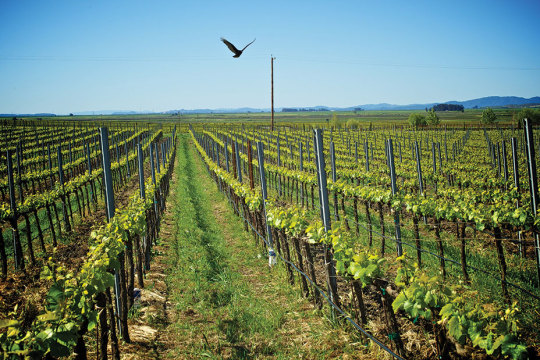
Shelter with Taste
finding balance in a brave new world!
There is a fantasy that winegrowing and winemaking is glamorous - that it is all just hobnobbing with mayor Pete in a wine cave. I hate to burst your bubble, but we’re just farmers that make a fancy, delicious beverage from our crops.
There are a lot of things to worry about as farmers. We are always watching the weather for frost, hail, rain, humidity, wind and heat spikes. Any of these at the wrong time could spell disaster. Then there is mildew, pestilence and bird damage. But that’s not all… labor, bureaucracy, taxes, recession and even mechanical issues with our tractors and equipment can lead to financial ruin. Of course, we have always lived in the shadow of a looming earthquake, but we’ve now added wildfires and power grid shutdowns to the list of potential trip wires. I never thought a pandemic would trump everything that came before.
Wine, by its very nature is social and the pandemic has changed - maybe permanently - the way we socialize. Instead of going to restaurants and bars, we are now cooking at home or ordering takeout and, if we socialize at all during the shelter at home order, we do it with our immediate family, housemates or with friends via video chat. If there’s a positive take, it’s that families are connecting again over a fresh cooked meal and the kitchen is once again the center of our gated castle. We have relearned the joys of lifting a glass with our family and discussing our fears and our dreams. In some ways, we will look back on this time as an opportunity to reconnect.
Nature throws a lot at farmers because nature abhors a monoculture. If something is too successful, it creates an environment where disease and pestilence can mutate or propagate, unchecked by natural processes. The way to combat disease pressure naturally is to emulate the rhythms of nature and overcompensate for the destructive aspects of farming by encouraging biodiversity and to resist the temptation of overproduction by finding balance. RSV finds balance by farming the soil with cover crops, practicing low or no-tillage to encourage soil tilth and resist the use of herbicides, synthetic fertilizers or pesticides - the things that break the deal with natural processes. Then we encourage diversity by allowing groves of trees to co-exist with vineyards, hedgerows between properties and beneficial insectaries. We encourage life by allowing sheep to graze the vineyards where they not only control the growth of the cover crop, but leave behind waste that encourages healthy populations of microbes that break down nutrients to a form that vines can access easily. In some ways, humans have become a monoculture. Maybe we need to strike a deal with nature and overcompensate for the damage that humans do by healing an ailing earth.
0 notes
Photo
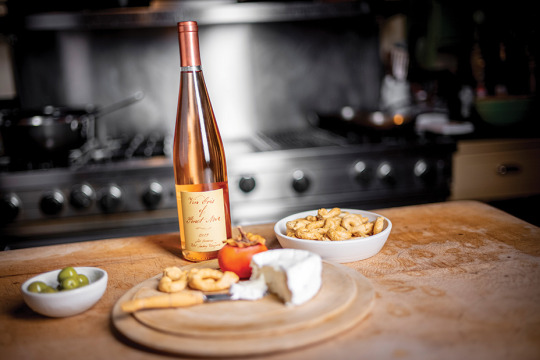
Desert Island Wine...
Pink Sunshine!
“If you were stranded on a desert island and only had time to grab one case of wine before your ship sank, what would it be?” Though an unlikely scenario, I ask this question of almost every potential employee of RSV. As bizarre as it may seem, it reveals much about an individual’s food and wine knowledge and if their philosophy is simpatico with RSV.
Some might choose what many wine writers have deemed the greatest wine of all time - the 1947 Cheval Blanc. Choosing to be stuck on an island with your only beverage being this powerful (and well aged) Right Bank Bordeaux might score some points for wine trivia knowledge; it reveals this candidate needs work on their food and wine philosophy. Let’s have a reality check. As great as this wine may be, it isn’t going to go well with your foraged fruits and roots… and the protein you might be lucky to find on land, or spear or net from the ocean, isn’t going to be the most enjoyable… a true first-world problem! And its auction value of many thousands of dollars won’t help on an uninhabited island. I guess one could use the bottles to write SOS on the beach and hope a well heeled yachtster sniffs it out.
At one time, I probably would have said Pinot Noir was my preferred desert island wine as it can go with the birds you might be lucky enough to dispatch, yet it can also work with fish and roots one might have to survive on. But it is still not ideal. Then, when we started to make Abraxas, that became my choice as the aromatic white blend would work with just about everything.
But what about the Vin Gris of Pinot Noir? It has enough oomph to work with the heartier fare one might find running on or flying around an island, yet it has the aromatic qualities that can go with the roots and some of the fruits - and it’s definitely delicious with the fish, molluscs, crustaceans, cephalopods and even the seaweed that can be found in the sea.
Most people think of rosé as a summer wine. I could not disagree more. It is an anytime wine. Of course I love it at summer picnics at the beach, but it is also delicious apres-ski with raclette or, more simply, a good soup and a grilled cheese sandwich after a hard day on the back forty. It is a refreshing contrast for just about any food and it can bring a little sunshine to the grayest of days. The Vin Gris of Pinot Noir is the perfect desert island wine no matter what season finds you stranded on your own private island.
0 notes
Photo

Pure Fun in the New World…
Just for the Blanc of it!
I need an escape from these surreal times. Nothing fancy, just a moment or two free from the anxiety created by this administration’s inaction on climate change and the sense of national shame I feel from infantile presidential tweets. All I want is to spend a few hours listening to music while cooking a tasty dinner with Maria and enjoying it all with a non-cerebral bottle of wine... one that delivers pleasure and works with everything we love to eat.
Some wines make you work too hard. Pop and sniff the cork, let the wine breathe, slosh it in a decanter, swirl it in the perfect glass shape, take a whiff, taste it and hope it will open up and work with the food you’ve worked so hard to make. Naw, not tonight. I want a sure thing, something good, something easy, something tasty… I want a pure, yummy, Pinot Blanc!
Pinot Blanc doesn’t always get the respect it deserves. The “point” people tend to reserve their highest scores for Chardonnay or varieties with more intensity. Sometimes intensity gets in the way of pleasure.
A few years ago, Eric Asimov wrote in the New York Times:
“I’m not claiming greatness or profundity for Pinot Blanc. I am saying that from the right place and in the right hands, Pinot Blanc can make distinctive, delicious wines that deliver much pleasure. I’ll always have a place for a wine like that...”
I know we are growing it in the right place and I hope it is in the right hands - that is not for us to judge. I do know that RSV’s Pinot Blanc delivers pleasure... and that is the essence of wine - to joyfully enhance a meal.
The pretense of wine can interfere with our ability to enjoy. We work hard to analyze it, we forgive hard tannin, high alcohol or too much oak, saying a certain wine will be great if given enough air or time. Sometimes I think we feel the need to work for it to alleviate our guilt for taking pleasure in indulgence. Why can’t we just enjoy with guilt-free, hedonistic abandon? Because a lot of times, guilt comes from feeling naughty that we are doing the wrong thing. RSV believes that a fine wine should not hurt your palate or the planet and we do our best to farm in a conscientious manner that furthers our mission to heal an ailing earth. But none of this matters if the wine does not taste good. RSV’s Pinot Blanc is just plain delicious.
We give you two opportunities to indulge: a little half-bottle for those intimate evenings with your significant other (or a date with yourself), and a big magnum for when you have a group of friends over and you’re ready to party. Blanc on!
0 notes
Photo
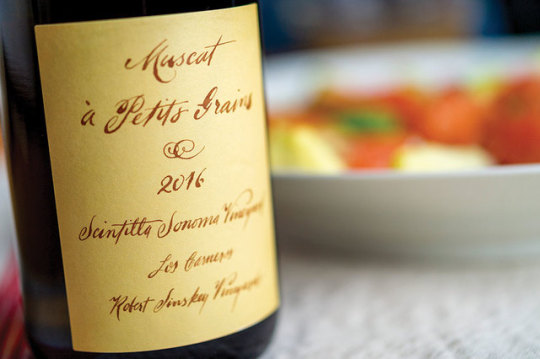
I Love You, I Hate You…
The Muscat Dilemma!
Muscat is the most delicious wine in the world. Muscat is the most insipid, disgusting, mass produced wine in the world. If both of these statements are true, Muscat has an image problem. It is a grape that has suffered from its success - maligned by incredibly popular, cheap, sweet Moscato. It is afflicted with “White Zin” syndrome - a syndrome whereas most people assume the wine to be sweet. As we now know, not all pink wine is sweet, but it took decades for the public to warm up to and embrace a good, dry Rosé. Now it is arguably the most popular category of wine. I wonder if history will repeat itself and Muscat will become the next “it” wine. I doubt it, but it would be nice.
A classically made, dry Muscat Blanc à Petits Grains can be sublime. Free of cloying sugar, it becomes an aromatic wonder with an explosive flavor profile that works well with comforting foods. As I write this on a hot summer day in July, just post Fourth celebrations, I am thinking of all the traditional BBQ foods that are most at home with beer. Replace that koozie with a goblet of RSV’s Muscat and imagine how delicious it would be with hot dogs, ribs, burgers, grilled vegetables, chips and dip or even some fresh grilled fruits adorned with a shaving of Manchego cheese.
What makes Muscat so enjoyable is that it is about pleasure over pretense and it is hard to be taken seriously when spun up with Master Sommelier lingo. It doesn’t need it. Yummy is a good enough adjective….
0 notes
Photo

Pinot Country...
Napa has never been Pinot Country. It wasn’t even Cab Country when RSV’s vineyards were planted in 1982. Napa was much more diverse in those days. If a king of reds existed in the ’70’s and 80’s, it was more likely Zinfandel than any other grape. Back in the ’80’s, Cab was planted next to Chenin Blanc, Riesling next to Merlot, Sauvignon Blanc next to Gamay Rouge, Muscat Canelli adjacent to Barbera, Muscat Rouge, Sangiovese, Grignolino… There even was a lawsuit between two wineries with similar names that was settled when one selected Petite Sirah as their signature red and the other selected Cabernet Sauvignon. We now know who was more prescient.
Even with all the diversity, the small plantings of Pinot Noir, in all reaches of the Valley, held special intrigue. Though it is arguable who brought the first selections of Pinot Noir to the Napa/Sonoma corridor in the 1880’s, many credit - Colonel Agoston Haraszthy de Mokesa, founder of Buena Vista Winery in the Carneros, as one of three potential pioneers of Pinot Noir. The selections brought in by the colorful Colonel would propagate vineyards throughout the region with some legendary results… the most remarkable was the 1946 Beaulieu Pinot Noir, a benchmark wine for Pinot Noir from California crafted by Andre Tchelistcheff, who told me before he died that it was the greatest wine he ever made.
It is by no mistake that Pinot Noir vineyards have consolidated in the cooler southern part of Napa where the marine influence moderates the climate… not-too-hot and not-too-cold for an expressive wine. Sure there were/are interesting wines made in the hills, with names like School House, Mayacamas and El Molino… old plantings that helped keep heirloom selections of Pinot Noir in production. At one time, almost every winery in Napa Valley had some form of Pinot Noir in bottle, but one by one, they ripped out vines and planted to the more lucrative and adaptive Cabernet Sauvignon.
If it weren’t for the pioneers… even if some of the original plantings were not as successful as others, we would not have the genetic material that makes up a good percentage of RSV Pinot Noir. Don’t get me wrong, some French clones brought in from nurseries can be an interesting addition. However, it is the heirlooms in our little part of Pinot Country in the Carneros region of Napa that makes RSV Pinot Noir distinct. The historic heirlooms seem better adapted to the local climate, ripening later than many of the French clones while maintaining better acidity, freshness and complexity… and it is nice to imagine a thread running from the 1800’s to today in the latest release of RSV’s Los Carneros Pinot Noir.
0 notes
Photo

R.E.S.P.E.C.T!
Can we respect the past while charting a course into the future? I sure hope so. Years ago, I sat next to a well-known, lifelong Napa vintner who said the average person working in the wine industry had a seven year frame of reference and it was our responsibility to keep reminding people what came before or risk losing that history. The concern is not only with preserving the verbal history, but the stylistic history of wine from all the different wine regions of the world. How does one know what a classic wine is if they have only tasted what is currently trendy?
One of my friends, restauranteur and master sommelier, Bobby Stuckey, was recently accused of being an elitist for writing that many young sommeliers do not have enough experience with classic wines to have a frame of reference and instead focus on wines with a good story regardless of whether the wine is sound or has a decent price-value relationship. Anyone who knows Bobby will know that he is not an elitist - however, he is demanding. He expects people who work for or with him to take the time to learn their craft and respect the trade for the benefit of their customer.
A classic wine is elegant, balanced, free of major flaws, enhances the food it is served with, and will age gracefully so that some day it will provide pleasure at the table. Now I prefer and respect well-farmed, minimally-manipulated, pure wines, but I would rather drink a beer or a cocktail than drink a flawed/funky wine with a good story. After all, the purpose of a wine is to bring pleasure. My first question when tasting a wine: Does it put a smile on my face? Then, usually the second question is: What will I serve with it?
Some day, I hope we will have a “wine bank”, where aspiring wine professionals can go to learn the history of wine. A place where they can understand the historical trends in wine and a place where they can learn that a great wine might be able to happen by accident in certain vintages - but a consistently great wine usually comes from a vigneron with discipline, diligence, restraint and a respect for craft. Knowledge is a great way to future-proof and learn from tradition.
0 notes
Photo

Slow Down... for Great Wine!
What makes a great wine? Is it based on flavor profile? Perceived quality? Scarcity? How about score? Does that matter anymore? What about how the grapes were farmed and the wine was crafted… does anyone care? It’s always baffled me how a wine that can be considered a luxury product can be grown using farming methods designed to bring in grapes at the lowest cost… especially when those methods are toxic to the environment and to people in contact with it. Almost thirty years ago, we observed that the use of glyphosate (a common ingredient in commercial herbicides) was destroying the rhythm of nature by disrupting microorganisms, worms, mycorrhizal fungi and the overall tilth of the soil. But more, we suspected it had the potential to be a carcinogen and we wanted no part of it. We did not want to fear our food and we did not want to foist a potentially toxic product on consumers under the guise of a luxury wine.
When we decided to farm organically in 1990, it wasn’t enough to just grow organic grapes; we wanted to learn how to make a better wine organically. That was when RSV winemaker Jeff Virnig introduced me to the teachings of Rudolph Steiner and the concepts of Biodynamic farming. The thing that stood out to me was the idea that it was the farmers responsibility to “heal an ailing earth” by mimicking the forces of nature to compensate for the damage inflicted by forcing our will on the land. The idea was to create an environment where the vine could thrive and access the nutrients from the soil that it needed, when it needed it, and not be dependent on human input for its survival. And if you grew a superior grape, you could craft an elegant, complete wine with less intervention in the cellar.
It seems that the time has come for conscientiously farmed wines to have their spotlight moment. We have seen the “Natural Wine” movement have an impact on restaurant wine lists, but just because a wine is farmed and produced conscientiously, it does not necessarily mean that it is going to be great… or even enjoyable. Now there is a guide that attempts to give a shout out to not only “Great Wines” but conscientiously grown and produced wines. It is called the Slow Wine Guide. At one time it only considered Italian wines but has now expanded to California and Oregon with a clearly defined mission:
"… With its publication, the editors-in-chief Giancarlo Gariglio and Fabio Giavedoni not only abandoned the score-based formula that had dominated the field for more than 20 years but they also adopted a wholly new and innovative set of criteria. For the first time, the pioneering Italian wine critics looked not just to the quality of the wines: They also took into consideration the wineries’ sustainable farming practices and the winemakers’ “Slowphilosophy,” as Gariglio has put it, “which continues to be increasingly important to consumers in wine and food globally."
We are proud that RSV has been recognized as a Slow Winery and Abraxas has been singled out as a “Great Wine” for the 2019 guide… it only took 35 years to become an overnight sensation in the Slow Wine world.
1 note
·
View note
Photo
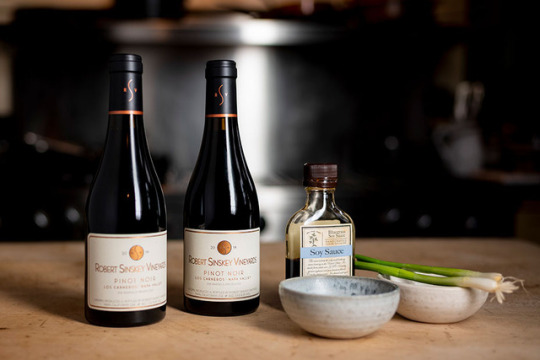
Petite Pinot.... I don’t need much, I just want a little bit!
I’m spoiled. Any day of the week I can grab a bottle out of the cellar to share with friends and family. But what about those days when it is just Maria and I and we don’t feel like opening a full size bottle? After all, we are now empty nesters and sometimes it is nice to settle in to a home cooked meal, start with a half bottle of Pinot Blanc and then move on to a half bottle of Pinot Noir… or just cook a burger and wash it down with a half of Pinot.
My father hated waste and I think his disdain rubbed off on me. He would not open a full bottle of wine unless there were guests to share it with because even though he had access to unlimited amounts of RSV wine, he just could not stand wasting un-drunk wine. As he got older, he would ask us to make a few cases of every wine in half bottles - and we would accommodate him. We would take the full size labels and stick them on the little bottles. They would look silly but it made him happy. I loved seeing he and his wife enjoying a half bottle at most dinners when it was just the two of them. Now that I am getting older, I get it. I just wanna little bit - but that little bit’s got to be good.
0 notes
Photo

A Rosé Tale…
I remember when “Rosé” was a dirty word. It doesn’t seem that long ago…. but maybe it was - and I’m just getting old. In those days, the most popular wines were White Zinfandel or other “Blush” wines and Bartles & Jaymes commercials were the only vinous ads on prime time. Almost every sommelier assumed that anything pink was sweet and refused to buy all rosé wines even though they were slinging buckets of Chardonnay with residual sugar.
I love a good, classic, Euro-styled rosé and I wanted RSV to make one to prove that a California producer could make a great one, but I did not know what to call it. Since the only grape variety in our vineyards appropriate to craft a “Rosé” from was Pinot Noir, we chose to call it Vin Gris of Pinot Noir. I couldn’t have been more naive. Though the wine was great from the beginning, I could not give it away. It seemed people would drink it in secret for fear that someone might accuse them of drinking sweet pink wine and virtually no one knew what Vin Gris meant.
One by one, the confident restauranteurs, chefs and sommeliers began pairing great rosé with their food and the public memory began to fade. People began to see the flexibility of a delicate, whole cluster pressed Vin Gris of Pinot Noir along with other well balanced rosés and how they enhanced their cuisine… and experience.
…and thank you for your support!
0 notes